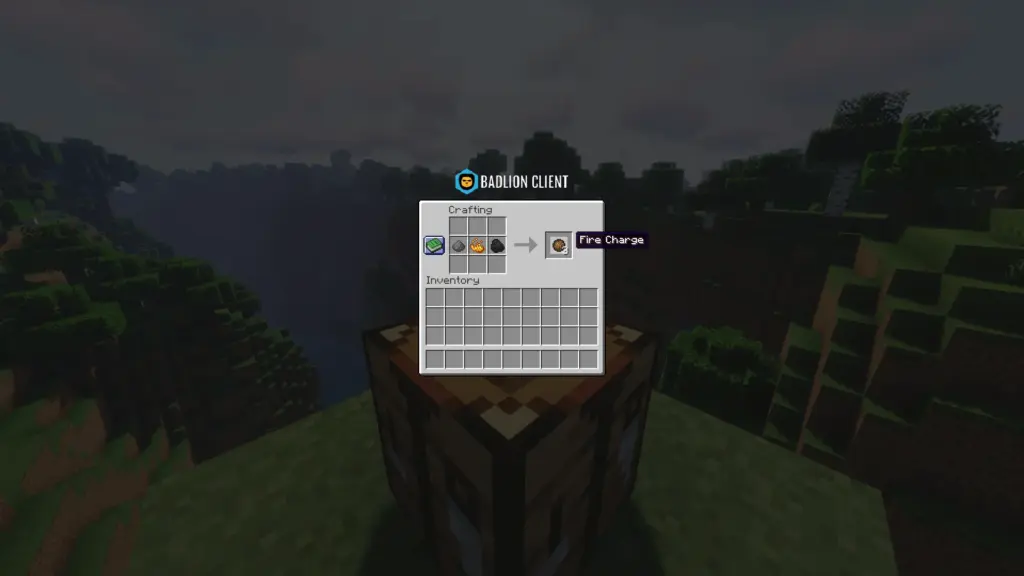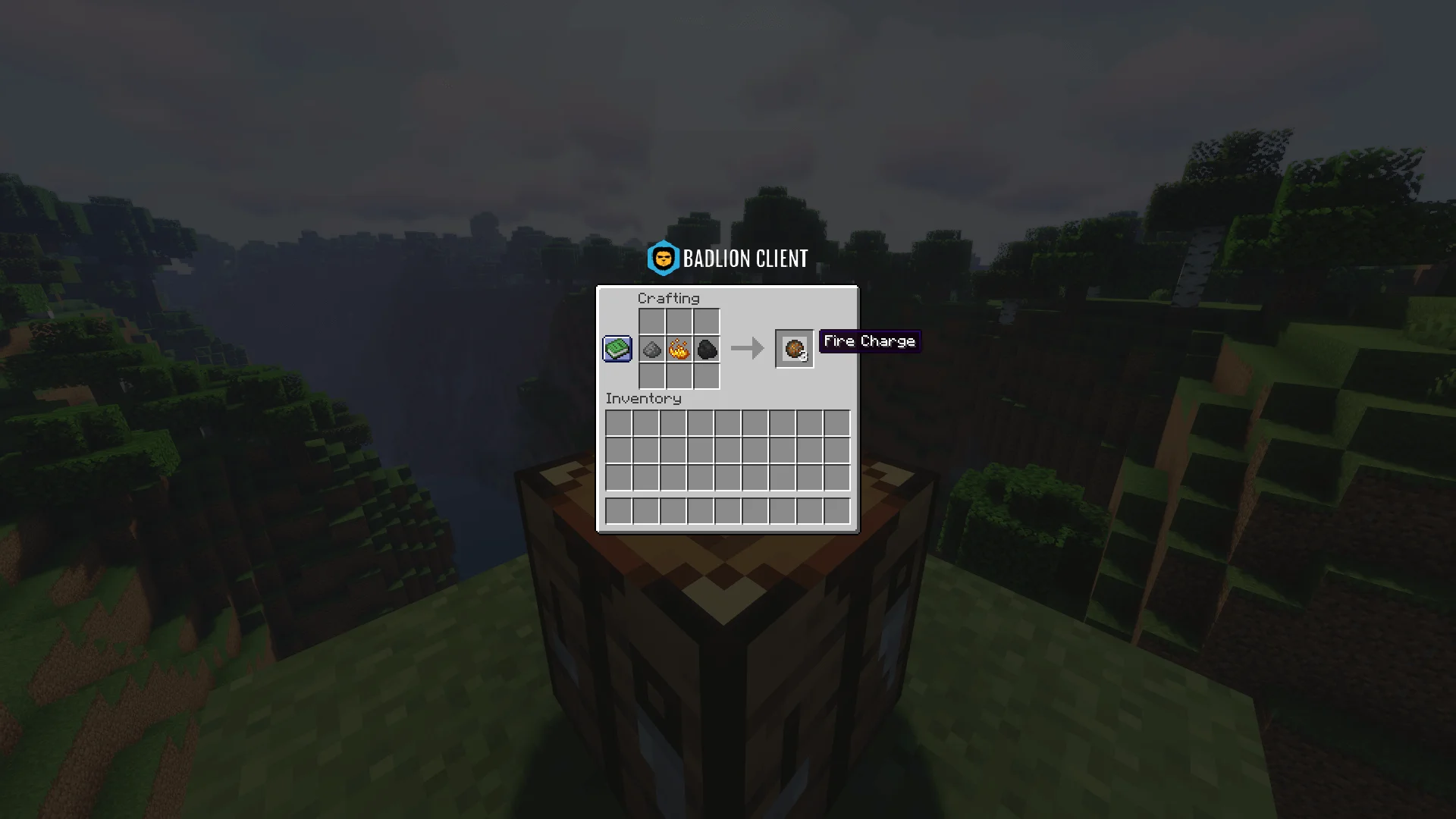
How to Use Fire Charge: A Comprehensive Guide
Fire charge, a seemingly simple item in the vast world of Minecraft, holds a surprising number of applications. Understanding how to use fire charge effectively can enhance your gameplay, from combat to construction and even automated farming. This comprehensive guide will delve into every aspect of the fire charge, providing you with the knowledge to master its uses.
What is a Fire Charge?
A fire charge is an item in Minecraft that can be used to ignite blocks, similar to flint and steel, or as ammunition for dispensers. It is crafted from gunpowder, blaze powder, and coal (or charcoal), making it a mid-game item accessible once you’ve ventured into the Nether. Understanding the crafting recipe is the first step to harnessing the power of the fire charge. The fire charge is useful for starting fires, lighting up areas, and even triggering certain mechanisms.
Crafting a Fire Charge
To craft a fire charge, you’ll need the following ingredients:
- 1 Gunpowder
- 1 Blaze Powder
- 1 Coal or Charcoal
Place these items in any arrangement on a crafting table to create three fire charges. Acquiring these resources is crucial. Gunpowder is obtained from Creepers, Ghasts, or Witches. Blaze Powder is crafted from Blaze Rods, found in Nether Fortresses. Coal is mined from coal ore, while charcoal is made by smelting wood in a furnace. Once crafted, the fire charge is ready to be used.
Using a Fire Charge Manually
The most straightforward way to use a fire charge is manually. When right-clicked on a flammable block, such as wood, leaves, or netherrack, the fire charge will ignite it. This makes it a handy tool for quickly starting fires or clearing vegetation. However, be cautious, as uncontrolled fires can spread rapidly, especially in wooded areas. Using a fire charge to light a campfire is a simple and efficient method. This can also be used defensively against mobs.
Fire Charge as Ammunition for Dispensers
One of the most versatile uses of the fire charge is as ammunition for dispensers. When loaded into a dispenser, the fire charge will be launched forward, igniting any flammable blocks it hits. This opens up a range of possibilities, from creating automated defenses to setting up traps. The dispenser can be triggered by redstone circuits, allowing for precise control over when and where the fire charges are launched. This makes it an invaluable tool for base defense or even automated farming. The distance a fire charge travels when dispensed is also a factor to consider when designing your setup.
Automated Defense Systems
By combining dispensers, fire charges, and redstone circuitry, you can create automated defense systems to protect your base from hostile mobs. A simple system might involve pressure plates that trigger dispensers loaded with fire charges when stepped on. More complex systems could use daylight sensors to activate the dispensers only at night, or tripwires to create targeted fire attacks. The key is to experiment with different redstone components and configurations to find what works best for your needs. Regularly replenishing the fire charge supply is important for maintaining the effectiveness of these systems.
Setting Up Traps
Fire charges can also be used to create traps for unsuspecting players or mobs. A common trap involves concealing a dispenser loaded with fire charges behind a wall or under the floor. When a player triggers a pressure plate or tripwire, the dispenser launches the fire charge, setting the area ablaze. These traps can be incredibly effective, but it’s important to consider the ethical implications of using them on other players. Consider adding a sign warning players of the trap to maintain fair gameplay. The fire charge’s ability to ignite blocks makes it a potent component in trap design.
Automated Farming
While it might seem counterintuitive, fire charges can be used in automated farming systems, particularly for harvesting crops like wheat or potatoes. By carefully controlling the spread of fire, you can quickly clear a field of crops, allowing you to replant and harvest more efficiently. However, this method requires precise timing and a thorough understanding of fire propagation to avoid accidentally destroying your entire farm. Using water to quickly extinguish the fire after harvesting is crucial. The fire charge provides a quick, albeit risky, method for crop harvesting.
Lighting and Decoration
Beyond their practical uses, fire charges can also be used for lighting and decoration. By placing flammable blocks like netherrack in strategic locations and igniting them with fire charges, you can create visually striking displays. This is particularly effective in the Nether, where the fiery landscape complements the aesthetic. You can also use fire charges to light campfires or torches, adding a touch of warmth and ambiance to your builds. The fire charge offers a unique way to add visual flair to your Minecraft world. Experiment with different block combinations to achieve unique lighting effects.
Safety Precautions When You Use Fire Charge
While fire charges are useful, they can also be dangerous if not handled properly. Always be mindful of your surroundings when using fire charges, and take precautions to prevent uncontrolled fires. Keep a bucket of water handy to quickly extinguish any unwanted flames. Avoid using fire charges in wooded areas or near flammable structures. Exercise caution and common sense to minimize the risk of accidents. The fire charge’s destructive potential necessitates responsible usage.
Advanced Techniques
For more advanced users, fire charges can be incorporated into complex redstone contraptions and command block systems. For example, you could create a system that automatically launches fire charges at specific intervals, or use command blocks to teleport fire charges to create custom explosions. These techniques require a deep understanding of redstone mechanics and command syntax, but they can unlock a whole new level of creativity in your Minecraft gameplay. [See also: Redstone Circuit Design] [See also: Minecraft Command Blocks Guide] The fire charge, when combined with advanced techniques, becomes a powerful tool for creative expression.
Troubleshooting Common Issues
Sometimes, you may encounter issues when using fire charges. For example, the fire charge may fail to ignite a block, or the dispenser may not launch the fire charge correctly. In these cases, check to ensure that the block is flammable, and that the dispenser is properly connected to a redstone circuit. Also, make sure that the dispenser is facing the correct direction. If you’re still having trouble, try restarting your game or consulting online resources for troubleshooting tips. The fire charge is generally reliable, but occasional glitches may occur.
The Future of Fire Charge
As Minecraft continues to evolve, the fire charge may see new uses and functionalities added in future updates. Mojang often introduces new items and mechanics that can synergize with existing features, potentially expanding the role of the fire charge in gameplay. Keep an eye out for future updates and experiment with new combinations to discover even more ways to use fire charge. The fire charge’s potential is limited only by the player’s imagination and future game updates.
Conclusion
The fire charge is a versatile and powerful item in Minecraft that can be used for a variety of purposes, from starting fires to creating automated defenses. By understanding its crafting recipe, its various applications, and its potential dangers, you can master the fire charge and enhance your Minecraft experience. So go forth, experiment, and discover all the ways you can use fire charge in your world. Remember to always exercise caution and common sense when using this fiery tool. The fire charge, in the right hands, is a force to be reckoned with. Learning how to use fire charge effectively is a valuable skill for any Minecraft player.

